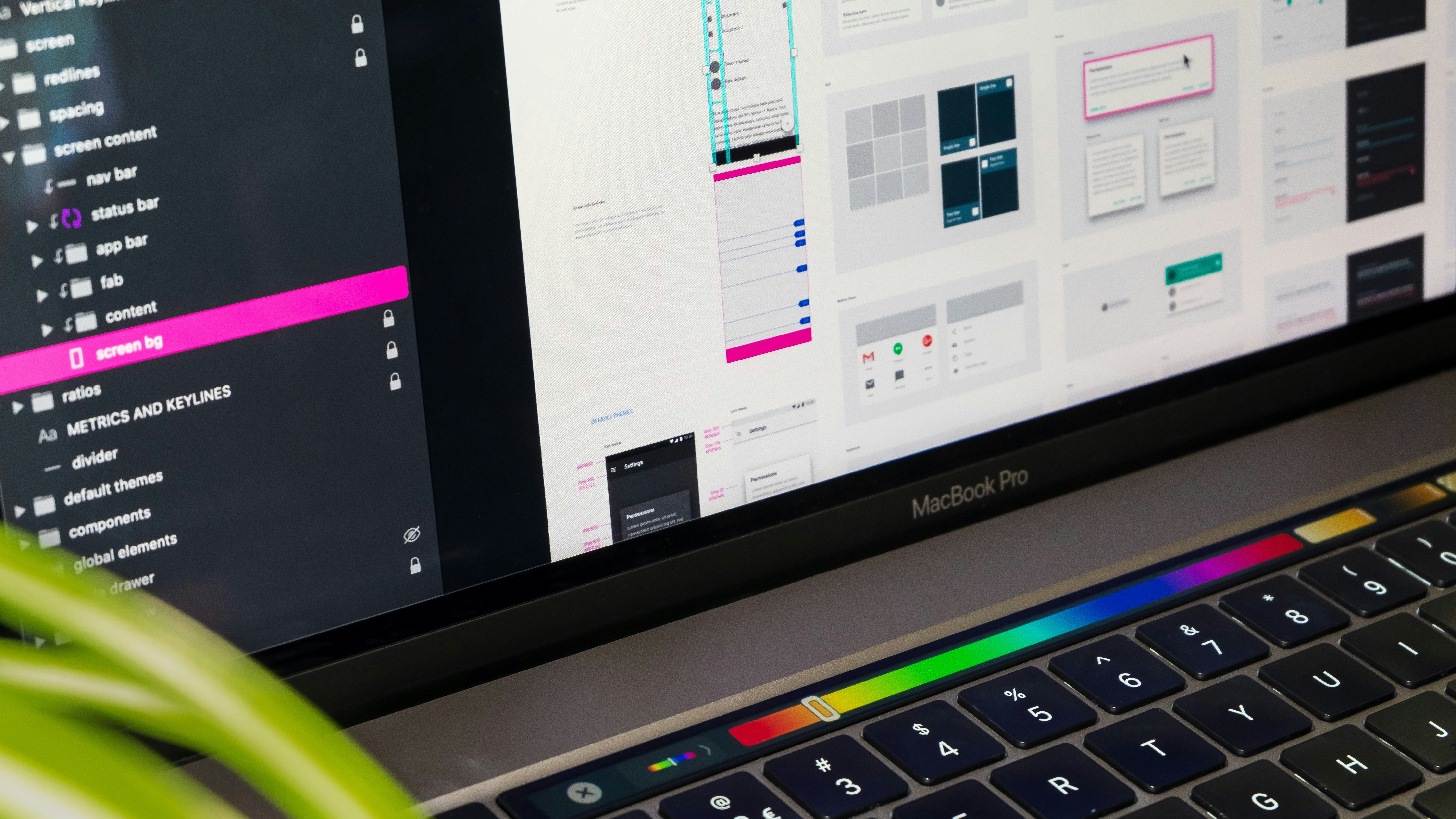The Design Playbook for Rapid Scale: Best Practices from High-Growth Tech Startups


Table of Contents
- Introduction: Why Rapid Scale Challenges UI/UX
- Key UI/UX Challenges in Hypergrowth
- Best Practices from High-Growth Companies
- 3.1 Embrace Design Systems
- 3.2 Prioritize Consistency and Clarity
- 3.3 Test Early and Often at Scale
- 3.4 Adopt a Cross-Functional Mindset
- Real-World Examples of Scalable UX
- 4.1 Airbnb’s Design Language System
- 4.2 Shopify’s Modular Approach
- Tying It All Together: Building a Culture of Continuous Improvement
- Key Takeaways
1. Introduction: Why Rapid Scale Challenges UI/UX
When a startup experiences rapid growth, everything escalates: user acquisition, feature requests, marketing campaigns, and the scope of both website and product experiences. In this environment, UI/UX can quickly become a bottleneck if it isn’t structured to evolve alongside the business.
Common pitfalls include:
- Design Debt: Hasty decisions lead to UI/UX inconsistencies across product interfaces, landing pages, and marketing sites.
- Resource Strain: Smaller design teams scramble to support both new product features and expanding website content.
- Higher User Expectations: At scale, users demand intuitive experiences on every channel—websites, web apps, mobile apps, and more.
By systematizing design processes and fostering user-centered practices, high-growth startups can maintain a consistent, delightful experience—even when launching new products, global markets, and complex websites at lightning speed.
2. Key UI/UX Challenges in Hypergrowth
- Maintaining Consistency Across Platforms
- Rapidly launching features or website pages without a unified style guide results in mismatched visuals and confusing navigation.
- Balancing Innovation & Familiarity
- Frequent UI experiments—on both product interfaces and marketing sites—can alienate users if not explained or rolled out carefully.
- Coordinating Cross-Functional Teams
- As product, engineering, marketing, and design teams multiply, misaligned goals can lead to duplicated efforts or disjointed user experiences.
- Designing for Diverse Audiences & Use Cases
- New demographic segments, cultural nuances, and device preferences add layers of complexity to both product UI and brand websites.
3. Best Practices from High-Growth Companies
3.1 Embrace Design Systems
A design system is a set of reusable components, patterns, and brand guidelines that unify both website and product interfaces. It ensures:
- Visual Consistency: Shared typography, color palettes, and button styles across marketing sites, landing pages, and in-product UI.
- Faster Iterations: Teams can rapidly create new pages or features without reinventing the wheel.
- Better Collaboration: Designers, developers, and marketers share a common “language,” reducing friction in cross-team workflows.
3.2 Prioritize Consistency and Clarity
When launching new features or marketing campaigns at breakneck speed, consistency keeps users comfortable and engaged.
- Uniform Typography & Color Schemes: Subtle variations in fonts or color usage across the website vs. the product can erode trust.
- Clean, Scalable Layouts: Responsive grids and intuitive navigation help new sections (like a blog, pricing page, or new product tab) blend seamlessly.
- Brand Cohesion: Reinforce the same brand voice, imagery, and messaging throughout the website homepage, blog, app screens, support docs, etc.
3.3 Test Early and Often at Scale
High-growth companies can’t rely on guesswork—they need continuous, data-informed testing.
- A/B Testing: Compare interface variations on both marketing landing pages and in-app flows to see which better drives conversions or sign-ups.
- User Feedback Loops: Collect session replays (Hotjar, FullStory), run quick usability tests, and analyze funnel metrics for sign-up or checkout flows.
- Incremental Rollouts: Release changes to a subset of users or website visitors first, reducing risk while gathering real-world feedback.
3.4 Adopt a Cross-Functional Mindset
UI/UX teams should work hand-in-hand with product management, engineering, marketing, and customer success.
- Synchronized Sprints: Align marketing and product release calendars. A new product feature might need simultaneous website updates or blog content.
- Continuous Feedback: Encourage cross-team critiques early in the design process—catching issues before full development.
- Shared KPIs: Whether you’re optimizing a website funnel or in-app usage, unify teams around metrics like conversion rates, user retention, or NPS.
4. Real-World Examples of Scalable UX
4.1 Airbnb’s Design Language System
- Website & App Consistency: As Airbnb grew from a simple travel listing site to a global platform, their Design Language System (DLS) unified both web and app experiences.
- Outcome: They rolled out new verticals (Experiences, Luxe) without sacrificing the cohesive “Airbnb look and feel” that users trust.
4.2 Shopify’s Modular Approach
- Flexible Branding: Shopify’s platform hosts thousands of merchant websites, each requiring unique branding within a consistent structure.
- Scalable Patterns: Their approach to shared UI elements (checkout flows, product listings) allows quick launches for new Shopify features—while each merchant site remains visually distinct.
5. Tying It All Together: Building a Culture of Continuous Improvement
Rapid scale demands a culture of iteration and data-driven decision-making, across both the website and the product:
- Data-Driven Insights: Monitor website analytics (bounce rates, time on page, lead gen) and in-app engagement metrics (funnel drop-offs, session duration) to identify UX gaps.
- Frequent, Smaller Updates: Roll out incremental improvements to the website UI, landing pages, or product flows instead of waiting for a massive annual redesign.
- Transparent Communication: Keep customers, stakeholders, and internal teams informed about upcoming UX changes to manage expectations and gather real-time feedback.
When user feedback and analytics inform each design decision, your brand and product experiences remain cohesive, intuitive, and primed for ongoing growth—even under the extreme pressure of hypergrowth.
6. Key Takeaways
- Design Systems: Adopt a reusable set of brand and UI components that apply to both your website and product, ensuring visual and functional consistency.
- Consistent & Clear UX: Users should feel at home whether they’re exploring your marketing site or navigating your core product.
- Continuous Testing: Embrace A/B testing, usability studies, and real-time analytics to optimize user journeys and sign-up funnels.
- Cross-Functional Collaboration: Align marketing releases, product updates, and design sprints around shared goals and metrics.
- Culture of Iteration: Smaller, data-driven improvements rolled out frequently lead to a stable, scalable UX—rather than jarring overhauls.
Final Thoughts
Whether you’re launching a new landing page, unveiling a mobile app feature, or expanding into global markets, the key to sustainable, high-quality growth lies in scalable, user-centric design. By systematizing your UI/UX approach, prioritizing consistency, and gathering continuous feedback, your startup can navigate hypergrowth without sacrificing the delightful experiences that made your brand successful in the first place.


.svg)


.svg)


.svg)





.svg)


